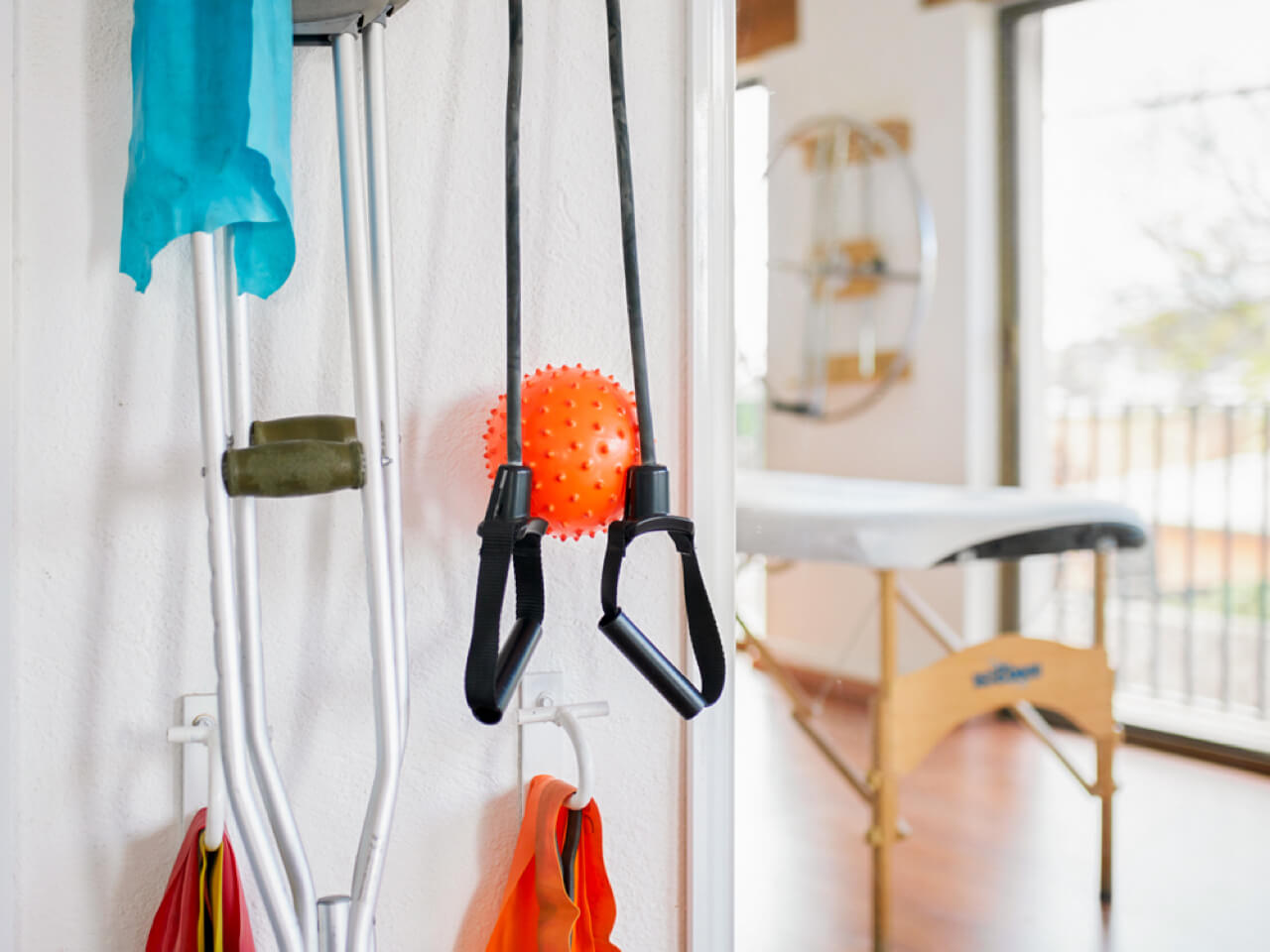As a registered occupational therapist, taking (and hopefully passing!) your NBCOT exam is one of the most critical milestones in your academic career. I remember feeling very overwhelmed and not knowing where to start with an undertaking feeling as big as studying for boards.
Once I found some resources and organized my materials, I felt a lot more confident and prepared to dive into the studying portion of NBCOT.
As with any other exam, the National Board for Certification in Occupational Therapy (NBCOT) requires a lot of preparation. While much of the raw content you learned in school will be used in some way during your exam, you also need a lot of specific details to help guide you through each part of the exam.
It is important to keep in mind the main goal of this exam: to prepare candidates for entry-level occupational therapy positions. Remember, exam questions do not aim to simply verify your knowledge of occupational therapy. The exam’s focus is to test a candidate’s ability to synthesize, analyze, and apply a range of information since that is what they will need to do when working in clinical practice.
Exam Breakdown: Format & Domains
Each exam registrant is allotted a four-hour block of time. When factoring in breaks and check-in time, candidates should expect to be at the testing center for around five hours. The test consists of three clinical simulation scenarios and 170 multiple-choice questions, each with three or four options. Questions span some of the following subcategories, or domains:
Domain #1 focuses on evaluation processes that therapists must use to inform the rest of the therapy plan of care. About 25% of the questions relate to this category.
Domain #2 involves a bit more higher-level thinking as it entails using clinical reasoning and judgment to form an intervention plan based on information gleaned in the evaluation. Roughly 23% of the NBCOT’s questions fall under this section.
Domain #3 is the biggest section with 37% of the questions, and it focuses on selecting appropriate, individualized interventions for your client.
Domain #4 focuses more on ethics, billing, and other considerations that relate to a therapist’s provision of quality services. This section will translate to about 15% of the questions.
After several years, NBCOT recently reformatted the distribution of these categories in 2017. This modification resulted in more balance across the domains since the 2012 version previously had nearly 50% of questions dedicated to Domain #3. Since intervention is the crux of our work, this category still has a large portion of dedicated questions, but there is renewed focus on other areas that impact our profession.
What Content Areas Should I Study?
There are many areas of occupational therapy that you must have a working knowledge of. Here are some of the major areas you will need to review to prepare for your exam:
Delineation between OT roles
Know the differences and similarities between OTRs, OTAs, and rehab aides.
- Who can do evaluations?
- What about screenings and standardized testing?
- What is each role responsible for on a daily basis?
Theory
- Information like Frames of Reference (FORs) and models is important, but remember that it all comes back to clinical reasoning
- NBCOT will not be quizzing you on the names of theory bases, but rather on your ability to apply FORs and other foundational knowledge to patient care
- Focus on what FORs are appropriate for certain diagnoses or patient populations
Code of Ethics
- We review these core values and principles/standards of conduct during class, and we’re expected to know their definitions
- How they apply to the field: What are some scenarios where these values may be put to the test? How might you behave in order to uphold your sense of [insert practice standard here]?
Pediatrics
- Have a sound knowledge of your developmental milestones and reflexes, but be able to answer questions about which ones are needed for certain therapeutic activities or functional tasks
- Know the basic purpose of cornerstones in pediatric care: 504 Act, IDEA, and IEP documentation
Physical Rehab
- When studying upper extremity injuries and grasp patterns, focus again on what they can prevent someone from doing (this is the functional application of the information)
- Have a general understanding of splinting, range of movement (ROM), manual muscle testing (MMT), metabolic equivalent for task (MET levels), and the functional independence measure (FIM) scale, but also be ready to answer questions on modifying activities, grading certain levels, and recommending devices based on where someone falls within these scales
- The same concept goes for modifications and functional considerations for the burn scales, special cord injury (SCI) levels of impairment, the Rancho Los Amigos levels, low vision, and adaptive equipment

Mental Health
- Practice areas can vary quite a bit here so keep in mind what type of treatments and patients are more commonplace and appropriate in settings like clubhouses, outpatient centers, home-based agencies, and inpatient hospitals
- Do a review of common mental health symptoms and understand how these can impact care but, more importantly, safety; be ready to understand how to manage each one
- Activity groups, developmental groups, and ACL levels will also be major considerations when planning appropriate activities, so understand how someone will present at each level or phase
Considerations to Keep in Mind
Learning Style
As someone who has finished OT school and gotten through a significant amount of projects, papers, and exams, you should have a general idea of what your learning style is. Do you do better with a giant stack of flashcards, or do you need to draw out the information on a big whiteboard? Are you more comfortable listening to recordings of past lectures or do you need to act out certain transfers and splinting procedures to fully understand it?
Whichever way works best for you, take advantage of that for this exam. Start by taking a practice exam. Once you get your results, look at the areas where you had the most trouble. Did you draw a complete blank on certain topics, or did the wording of questions throw you off?
If some content stumps you, add that to your study plan. If the verbiage seemed confusing, don’t worry; you’re not alone! You will get more used to the NBCOT’s phrasing as you take additional exams.
Bottom Up vs. Top Down
Most therapists learn these concepts as they relate to the treatment of patients, but this can also be a helpful way to tackle NBCOT exam prep. Top-down learning refers to going from general to specific concepts. Bottom bottom-up learning refers to the opposite: starting with specific ideas and then branching out to their broader applications.
There are certain topics that are more well-suited for top-down strategies, such as ethics or payor information. It makes sense to learn what each core value is before learning where it can best be used.
The same goes for the nitty-gritty content of Medicare, Medicaid, and private payers. Learning the basics of each is easier so that you can have a better understanding of where each insurance is most helpful.
As for bottom-up learning, it’s more helpful to learn the specifics of scales like ROM, MMT, Rancho Los Amigos, SCI levels, and the FIM scale before learning how they inform practice and can assist certain patients.
Safety First
One of the most important concepts to keep in mind regarding exam questions is safety. If you are ever in doubt of what answer to select or if it seems that there are multiple correct answers, always revert to the safest possible answer.
Safety should always be the bottom line of the work we do since we must ensure our patients’ safety above all else. So there will likely be some answers that may be diagnostically appropriate but not safe due to a client’s presentation.
How Does Safety Present in the Exam?
Here’s an example: a patient has just had a cerebellar stroke. Your main intervention with him is focused on balance and coordination training. However, he is currently presenting to therapy with dizziness and nausea.
What’s the solution? Sample answers may include downgrading the task but still working on balance, addressing another performance deficit, or canceling therapy. It is not necessary to cancel therapy unless his symptoms are significant and he declines therapy. Working on a downgraded balance task is a safety risk so the best answer is to focus on one of his other performance deficits or goals for the day (and to include all of this in your documentation).
As you can see, there are many factors that candidates must be considerate of when they are taking the exam. Most important of all is to go in with a solid amount of preparation. They say practice makes perfect for a reason. Mock exams, information review, and practice scenarios will all help strengthen your reasoning skills and clinical judgment while allowing you to successfully navigate any question that might come your way.


